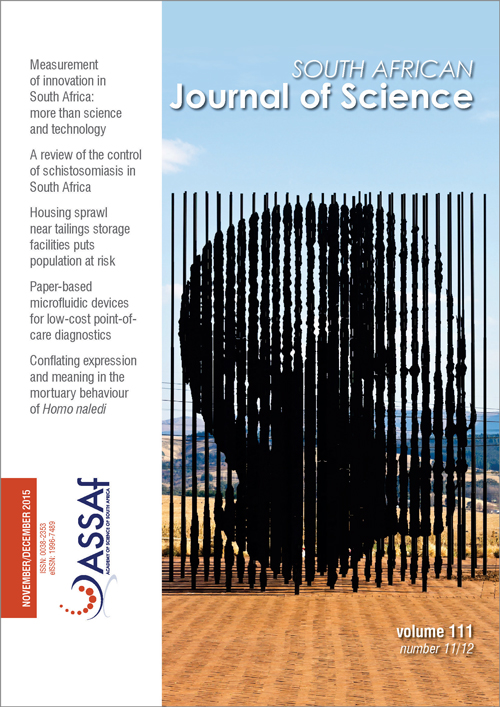Housing and population sprawl near tailings storage facilities in the Witwatersrand: 1952 to current
DOI:
https://doi.org/10.17159/sajs.2015/20140186Keywords:
aeolian dust, residential population, quartz, silicosis risk, calculating exposed populationAbstract
Mining, tailings storage facilities (TSFs), dust pollution and growth in residential housing development are synonymous with the Witwatersrand, South Africa. Encroachment of housing onto land close to TSFs, i.e. areas rendered marginal because of the dust hazard and risk of structural failure, has continued unabated for decades, intensifying human exposure to windblown mineral dust. Recent research indicates that the finer milling used for modern gold extraction results in aeolian dust emanating from the TSFs which contributes to a higher proportion of inhalable particles in the source material. Air quality dispersion modelling, validated by ambient aerosol monitoring campaigns, indicates that episodic dust events generate particulate matter (PM10) and, specifically, quartz dust concentrations that are unhealthy at distances of up to 2 km downwind from TSFs. This contribution documented residential development from 1952 to 2011 (using historical aerial photographs, census data from 2001 and 2011 and ancillary information) to determine the population exposed to dust emanations from the TSFs. Using the images, land use was classified into residential areas, TSF footprints and open areas, onto which a series of 500 m buffer zone contours were superimposed. The resulting statistics were used to assess the populations exposed to dust hazard within the defined buffer zones. Overall, housing development has experienced a growth of approximately 700% since 1952 at a rate of 14% per year. Analysis of recent monitoring campaign data has confirmed multiple occurrences of quartzrich inhalable dust in residential settings at levels that exceed occupational health standards, extrapolated to values for population exposure.
Published
Issue
Section
License

All articles are published under a Creative Commons Attribution 4.0 International Licence
Copyright is retained by the authors. Readers are welcome to reproduce, share and adapt the content without permission provided the source is attributed.
Disclaimer: The publisher and editors accept no responsibility for statements made by the authors
How to Cite
- Abstract 613
- PDF 709
- EPUB 184
- XML 239












.png)